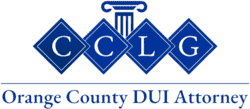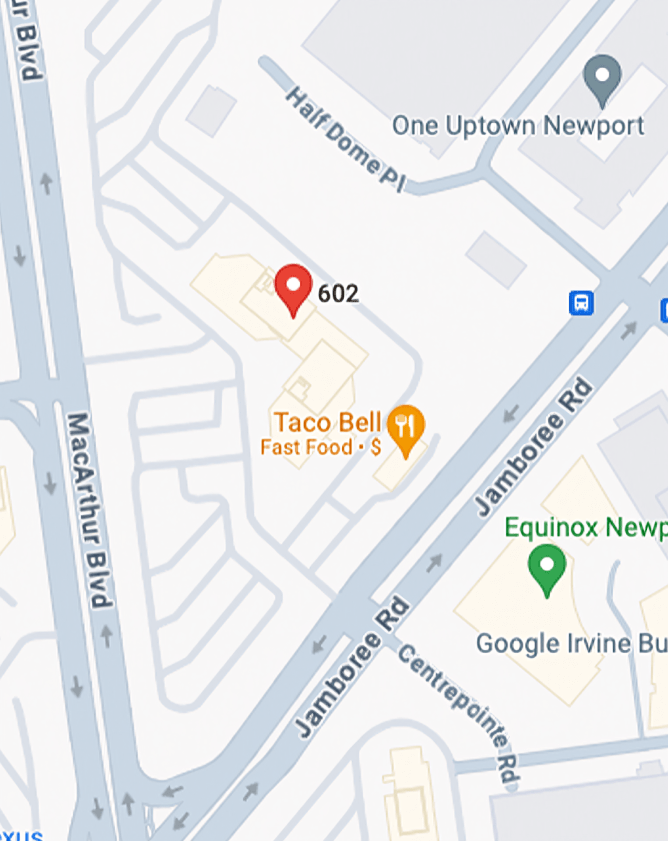DUI Checkpoint guidelines in California
Since DUI checkpoints are so invasive they are governed by strict rules to make sure that the checkpoints comply with both, the US and California Constitutions. The following are rules that California DUI checkpoints must follow:
The Supervising Officers must make all operational decisions
Operational decisions consist of how, where, and when the checkpoints will occur. These decisions have to be made by the Supervising Officers, so that the correct processes are followed when conducting and enforcing the checkpoints.
Vehicles must be stopped according to unbiased criteria.
The determining criteria for stopping motorists cannot be done as the checkpoint is in progress. The measures by which the motorists are being stopped must be unbiased, and must have been previously determined by the supervising officer. To accomplish unbiased criteria, a mathematical choosing process should be administered. Stopping every sixth car is an example of unbiased criteria, however, choosing to stop a car based on the physical appearance of the vehicle or driver is not permissible. This guideline seeks to eliminate any bias or profiling by the law enforcement officers conducting the checkpoint.
Checkpoint must be located somewhere reasonable
The location of the checkpoint must correlate to a location where it would deter driving under the influence. Such as, locations where DUI arrests, or accidents frequently happen are permissible checkpoint locations.
The checkpoint has to be reasonably safe
The Supervising Officers have to consider safety when choosing a location for the checkpoint. Individuals operating the vehicle have to see the checkpoint as they approach. Supervising Officers must also consider the street layout and traffic patterns when choosing a checkpoint location.
The checkpoint must be administered at a reasonable time of day and for a reasonable length of time
The Supervising Officers have to consider the invasiveness of the checkpoint when they are planning the checkpoint. The checkpoint’s invasiveness must be considered and weighed against how effective it will deter driving under the influence.
The checkpoint’s appearance should look official
Any person behind the wheel should not question the validity of the checkpoint as they approach. The reasoning behind this rule is to ensure that fright is reduced when conducting these checkpoints. A checkpoint’s validity can be shown by the presence of marked police cruisers, officers in uniform, lights, and signs.
Checkpoint should only detain drivers for short length of time
The officer should only detain a driver for the amount of time it takes to look for signs of intoxication. The driver should be free to leave if no probable cause is present, or if no signs that the driver was under the influence exist. The most common indicators that a driver could be under the influence are slurred speech, smell of alcohol present on the driver’s breath, or red eyes.
The checkpoint should be advertised publicly
Often, the checkpoints are advertised a week in advance on local newspapers, or news stations, as well as on local law enforcement websites. However, failure to advertise a checkpoint does not make the checkpoint improper.
Commonly Asked Question about DUI Checkpoint in California
What occurs during a DUI checkpoint stop?
The DUI checkpoint should be clearly lit and marked as you approach it. Usually, flashing lights are present along with officers in uniform. The officers will then proceed like any other traffic stop and ask you for your license and registration. From the time they ask you for your license and registration to the time they let you pass, they will be searching for signs of intoxication mentioned above. The officer will observe the way you respond to questions, and your actions as you retrieve your license and registration. The officer will also be searching for any visible drugs or alcohol in your vehicle, as well as, trying to detect any presence of alcohol on your breath.
If during the process stated above, any signs of intoxication are present, you will be asked to submit to a field sobriety, or breath test. These test are meant to reveal the probable cause required to make a DUI arrest. If a finding shows enough probable cause that you were under the influence of alcohol, drugs, or the breath test results show a blood alcohol concentration of .08% or higher, you will be arrested pursuant to Vehicle Code 23152. However, if none of the above occurs and there is no probable cause to arrest you, then you should be free to go.
The DUI checkpoint process may be similar to a regular DUI traffic stop. However, it is important that law enforcement must adhere to strict rules when conducting these checkpoints. Failing to act accordingly under the checkpoint guidelines, could lead a subsequent arrest to be determined unlawful. The arrest could be considered unlawful even if you were driving under the influence. Remember, similar to any other DUI case, the evidence against you alone, is not sufficient for a conviction. In your FREE consultation, the attorneys at the Orange County DUI Attorney Law Firm can build and explain the several defenses that may be available to you.
Can I change my route to avoid a DUI checkpoint as I am approaching it?
There is no law that states you cannot change your route and avoid the checkpoint. As discussed above, checkpoint will most likely be advertised to the public. However, most individuals do not check for these checkpoints in advance and have no idea they existed until they are approaching one. A majority of police departments do not authorize their officers to stop any drivers who avoid the checkpoint.
Remember, that in avoiding a checkpoint you must still follow all of the traffic rules. Sometimes, depending on how close to the checkpoint you are, changing your route without violating any traffic rules may not be a possibility. Any traffic violation will authorize the officers to lawfully pull you over. Also, officers are authorized to pull you over if they see that your car has any broken head or taillights. Attempting to circumvent the checkpoint may draw attention to yourself, and if you exhibit any driving patterns of driving under the influence stated previously, you may be at risk of being pulled over.
Can I refuse to be inspected at a DUI checkpoint?
The short answer is no. Pursuant to the California Vehicle Code, you must submit to be checked at a DUI checkpoint. You may be charged with a violation if you refuse to follow the officer’s orders.
What happens if I go through a DUI checkpoint without a license?
First of all, there is a difference between forgetting your driver’s license and not being licensed to drive in the first place. The consequences you may face depend on which category applies to you.
Failing to have your driver’s license with you may result in being charged with Failure to Display Your Driver’s License. Most of the time, your charges will be dismissed if you can later prove that you are licensed to drive in California.
However, if you are not licensed to drive and you come to a DUI checkpoint, you may face harsher consequences. Depending on your situation, you can be charged with Driving Without a Valid License, or Driving on a Suspended License. Your vehicle may be impounded if you are charged with one of the charges mentioned in the previous sentence. Recently, there has been much disagreement with officers’ ability to impound vehicles in these instances. If the registered owner can authorize its release before the checkpoint is over, the car should not be impounded if the only charge against you is either a Driving Without a Valid License or Driving on a Suspended License.
Where can I find the DUI checkpoint advertisements?
Most of the time, the location of DUI checkpoints will be advertised publicly in advance. As stated previously, there is no firm requirement that police departments have to publicly advertise in advance. However, if a checkpoint is publicly advertised in advance it will most likely be located on the police departments website, on the local news website, in the local newspaper, or local news. The advertisements can sometimes be very general with no specific information, other than a statement that a checkpoint will be conducted.
Additionally, smartphone apps, like Waze, enable the driver to check information about DUI checkpoint locations.
The Driving Without License Controversy Surrounding California DUI Checkpoints
Recent criticisms have led to changes in the DUI checkpoint laws that involve the ability to impound a person’s vehicle.
Prior to 2012, law enforcement was authorized to impound vehicles driven by individuals without their licenses at DUI checkpoints. Individuals criticized that this practice was:
- Unfairly affected undocumented immigrants that required a car for work;
- Violated the right against unlawful search and seizure protected by the Fourth Amendment; and
- Were monetarily motivated.
These criticisms resulted in the establishment of Assembly Bill 353 (CVC Section 2814.2) by the California legislation. The bill prohibits a vehicle from being impounded stemming from a sole charge of driving without a license violation.
The Smart Phone Apps Controversy Surrounding California DUI Checkpoints
A ban was established in 2011 that prohibits apps revealing DUI checkpoint locations. The Senate decided that these apps empowered and allowed driving under the influence. App developers argued that these apps reminded drivers of the perils of driving under the influence and would raise awareness. The developers also argued that these apps would remind individuals to be responsible when they are behind the wheel. This disagreement is still ongoing, and there are still apps that are not complying with the Supreme Court’s ruling.
The Orange County DUI Attorney Law Firm can help if you have been arrested at a DUI checkpoint.
A skilled attorney is your best option when you have been arrested at a DUI checkpoint. Arrests stemming from a DUI checkpoint require an experienced attorney with knowledge of the laws that officers must comply with. Our team of attorneys will aggressively defend your rights throughout this confusing and overwhelming process. Our attorneys have handled many cases involving DUI checkpoint arrest in the Orange County area. If you have been arrested for DUI, do not hesitate to hire an attorney. We encourage you to call our office today for you FREE consultation, where our experienced attorneys will begin building a strong defense to ensure you get the best result possible.
Call our office today at 949-377-2280 for your FREE DUI consultation.

